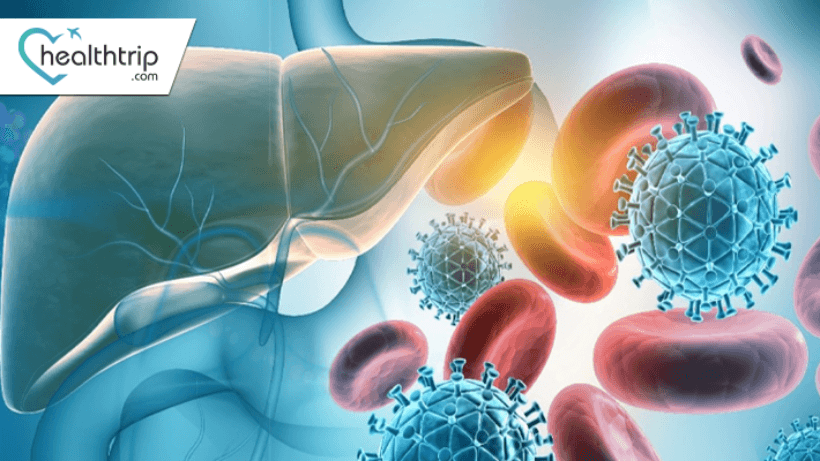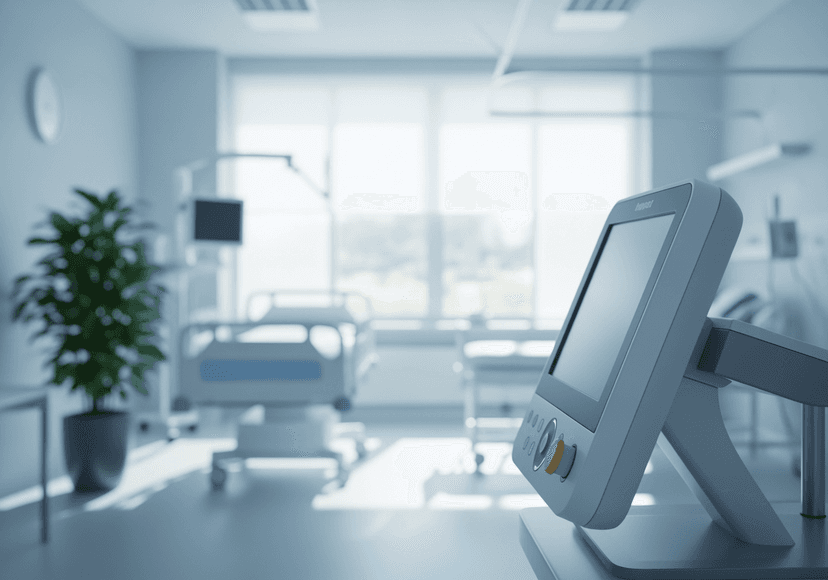
Primary Liver Cancer: Unveiling Symptoms, Causes, and Prevention
04 Dec, 2023
 Healthtrip
HealthtripIntroduction
- The liver, a vital organ with multifaceted functions, is susceptible to various diseases, including primary liver cancer. This type of cancer originates within the liver cells, posing a significant health threat. In this blog post, we will delve into the intricacies of primary liver cancer, exploring its symptoms, causes, and preventive measures.
Unveiling the Symptoms
- Identifying primary liver cancer in its early stages can be challenging as symptoms often manifest in later phases. Nevertheless, recognizing these signs is crucial for timely intervention.
1. Abdominal Pain and Swelling
Persistent pain or discomfort in the upper abdomen, coupled with noticeable swelling, may indicate liver cancer. This is attributed to the tumor's impact on the liver's structure and function.
2. Unexplained Weight Loss
Rapid and unexplained weight loss can be a red flag for various cancers, including liver cancer. The body's metabolic imbalance due to cancer can lead to unintentional weight loss.
Most popular procedures in India
3. Jaundice
Yellowing of the skin and eyes, known as jaundice, occurs when the liver is unable to process bilirubin properly. Liver cancer can obstruct bile ducts, contributing to this discoloration.
4. Changes in Appetite and Fatigue
Liver cancer can disrupt the body's energy balance, leading to changes in appetite and persistent fatigue. These symptoms may result from the cancer interfering with the liver's metabolic functions.
Wellness Treatments
Give yourself the time to relax
Lowest Prices Guaranteed!

Lowest Prices Guaranteed!
Decoding the Causes
- Understanding the root causes of primary liver cancer is essential for developing preventive strategies. The primary risk factor for liver cancer is the presence of chronic liver diseases.
1. Chronic Hepatitis Infections
Long-term infections with hepatitis B or C viruses significantly elevate the risk of liver cancer. These viruses can cause chronic inflammation, leading to the formation of cancerous cells over time.
2. Cirrhosis
Liver cirrhosis, a condition marked by scarring of the liver tissue, is a precursor to liver cancer. Chronic alcohol abuse, hepatitis infections, and fatty liver disease are common causes of cirrhosis.
3. Non-Alcoholic Fatty Liver Disease (NAFLD)
NAFLD, associated with obesity and metabolic syndrome, is an emerging cause of primary liver cancer. The accumulation of fat in the liver can progress to inflammation and eventually cancer.
4. Genetic Factors
Hereditary conditions, such as hemochromatosis and Wilson's disease, can contribute to liver cancer. Genetic predispositions may increase susceptibility to liver diseases that foster cancer development.
Prevention Strategies
- While some risk factors for primary liver cancer are beyond individual control, adopting certain lifestyle choices can mitigate the risk and promote overall liver health.
1. Vaccination against Hepatitis
Immunization against hepatitis B is a crucial preventive measure, as chronic hepatitis B infection is a major risk factor for liver cancer.
2. Regular Screening for Hepatitis and Liver Diseases
Routine screenings for hepatitis and liver diseases, especially for individuals with known risk factors, can facilitate early detection and intervention.
3. Healthy Lifestyle Choices
Maintaining a healthy weight, exercising regularly, and consuming a balanced diet can reduce the risk of developing liver cancer, particularly for those with NAFLD.
4. Limiting Alcohol Consumption
Moderating alcohol intake is pivotal in preventing liver diseases, including cirrhosis, which significantly elevates the risk of liver cancer.
Advanced Diagnostic Approaches
- In addition to recognizing symptoms and understanding risk factors, advanced diagnostic methods play a pivotal role in the early detection of primary liver cancer.
1. Imaging Techniques
Sophisticated imaging technologies such as computed tomography (CT) scans, magnetic resonance imaging (MRI), and ultrasound are instrumental in visualizing the liver and detecting abnormalities. These diagnostic tools enable healthcare professionals to identify tumors, assess their size, and determine their precise location within the liver.
2. Biopsy
A liver biopsy involves extracting a small tissue sample from the liver for examination under a microscope. This procedure aids in confirming the presence of cancer cells and determining the specific type of liver cancer. Biopsies also assist in assessing the cancer's stage, which guides treatment decisions.
Evolving Treatment Approaches
- Treatment strategies for primary liver cancer have evolved, offering patients a range of options tailored to their specific condition.
1. Surgery
Surgical interventions, such as tumor resection or liver transplantation, are potential curative approaches, especially in the early stages of liver cancer. Skilled surgeons aim to remove the cancerous tissue while preserving as much healthy liver as possible.
2. Ablation Therapy
Ablation techniques involve destroying cancerous cells using methods like radiofrequency ablation (RFA) or microwave ablation. These procedures are suitable for small tumors and are often performed using minimally invasive techniques.
3. Transarterial Chemoembolization (TACE)
TACE combines chemotherapy and embolization to target cancerous cells while blocking the blood vessels that supply them. This method is particularly beneficial for patients with tumors that are not suitable for surgical removal.
4. Targeted Therapy and Immunotherapy
Advancements in cancer research have led to the development of targeted therapies and immunotherapies. These treatments aim to disrupt specific pathways involved in cancer growth or enhance the body's immune response against cancer cells.
The Role of Regular Follow-Up
- Successfully navigating primary liver cancer involves more than just initial diagnosis and treatment. The significance of regular follow-up care cannot be overstated, as it plays a critical role in monitoring the patient's health, assessing treatment outcomes, and addressing any emerging challenges.
1. Monitoring Treatment Efficacy
Regular follow-up appointments provide healthcare professionals with the opportunity to assess the effectiveness of the chosen treatment plan. Imaging tests, blood work, and other diagnostic measures help track changes in the size and activity of liver tumors. This ongoing evaluation is crucial for making informed decisions about the continuation or modification of treatment.
2. Early Detection of Recurrence
Liver cancer has a propensity for recurrence, even after successful treatment. Regular follow-up appointments enable early detection of any signs of cancer recurrence. Detecting recurrent cancer at an early stage enhances the likelihood of implementing timely interventions, potentially improving treatment outcomes.
3. Managing Treatment Side Effects
Treatment for primary liver cancer, whether surgical, ablative, or medical, often comes with associated side effects. Regular follow-up visits allow healthcare providers to address and manage these side effects promptly. This proactive approach helps enhance the patient's quality of life during and after treatment.
4. Comprehensive Health Assessment
Beyond focusing solely on liver-related issues, regular follow-up care involves a comprehensive assessment of the patient's overall health. This includes monitoring for potential complications, evaluating the status of other organ systems, and addressing any emerging health concerns.
Conclusion
- In the continuum of primary liver cancer care, regular follow-up appointments are not merely routine check-ins; they are lifelines for monitoring health, detecting issues early, and ensuring ongoing support. Emphasizing the importance of these follow-ups empowers patients, promotes holistic well-being, and contributes to a proactive and vigilant approach to managing primary liver cancer over the long term
Related Blogs

Success Stories of Liver Disease Treatment in India through Healthtrip
Explore how to treat liver disease in India with top

Affordable Treatment Options for Liver Disease in India with Healthtrip
Explore how to treat liver disease in India with top

Healthtrip’s Guide to Treating Liver Disease in India
Explore how to treat liver disease in India with top

Best Doctors in India for Liver Disease Management
Explore how to treat liver disease in India with top

Top Hospitals in India for Liver Disease Treatment
Explore how to treat liver disease in India with top

Top 5 Oncologists in Krefeld
Find expert oncology specialists in Krefeld, Germany recommended by HealthTrip.










